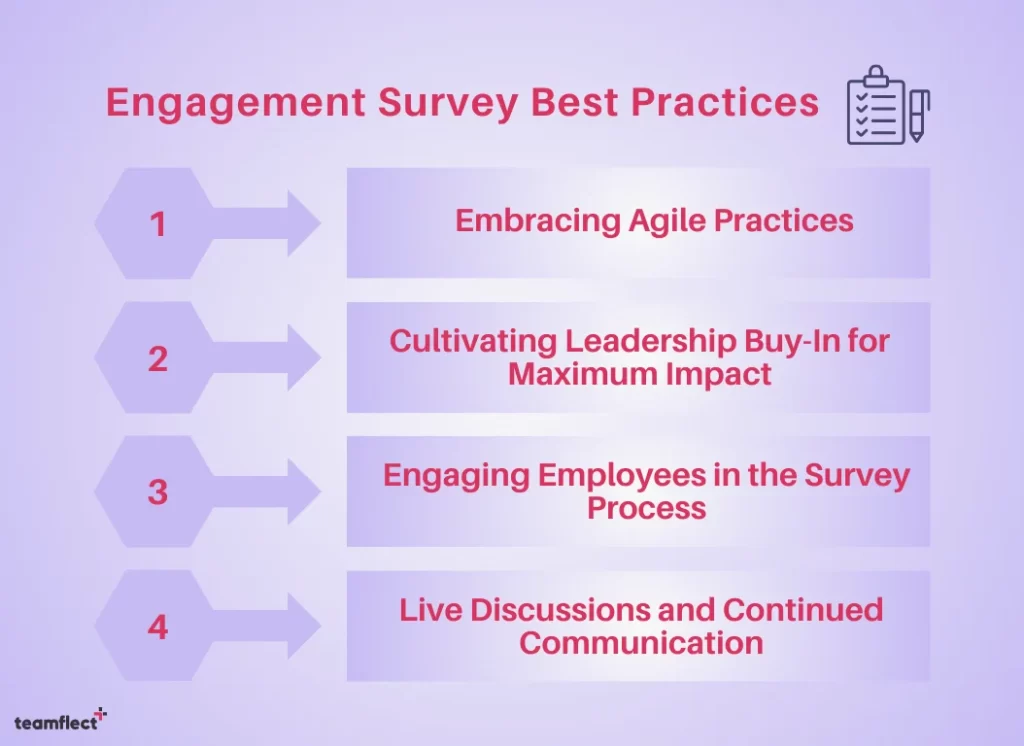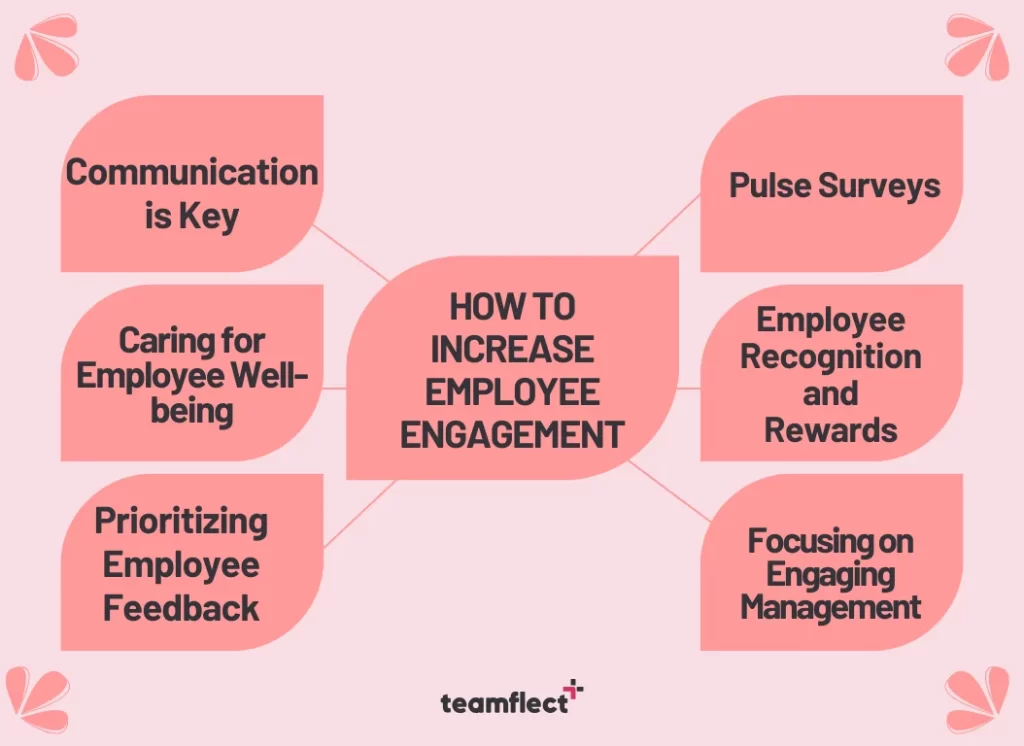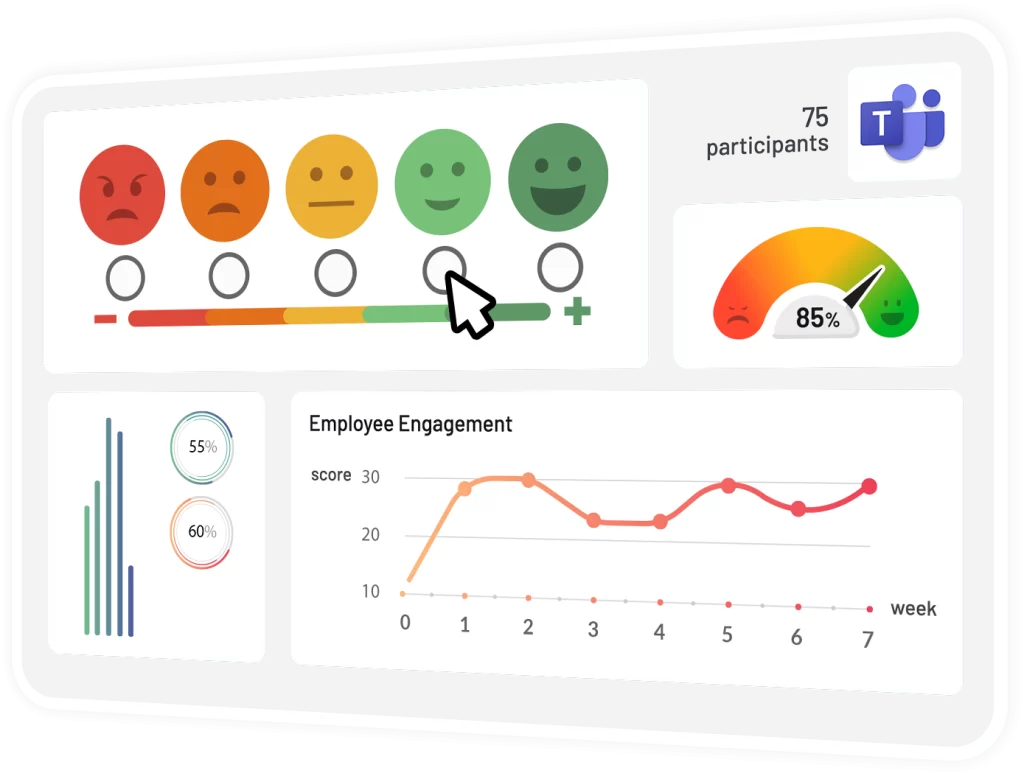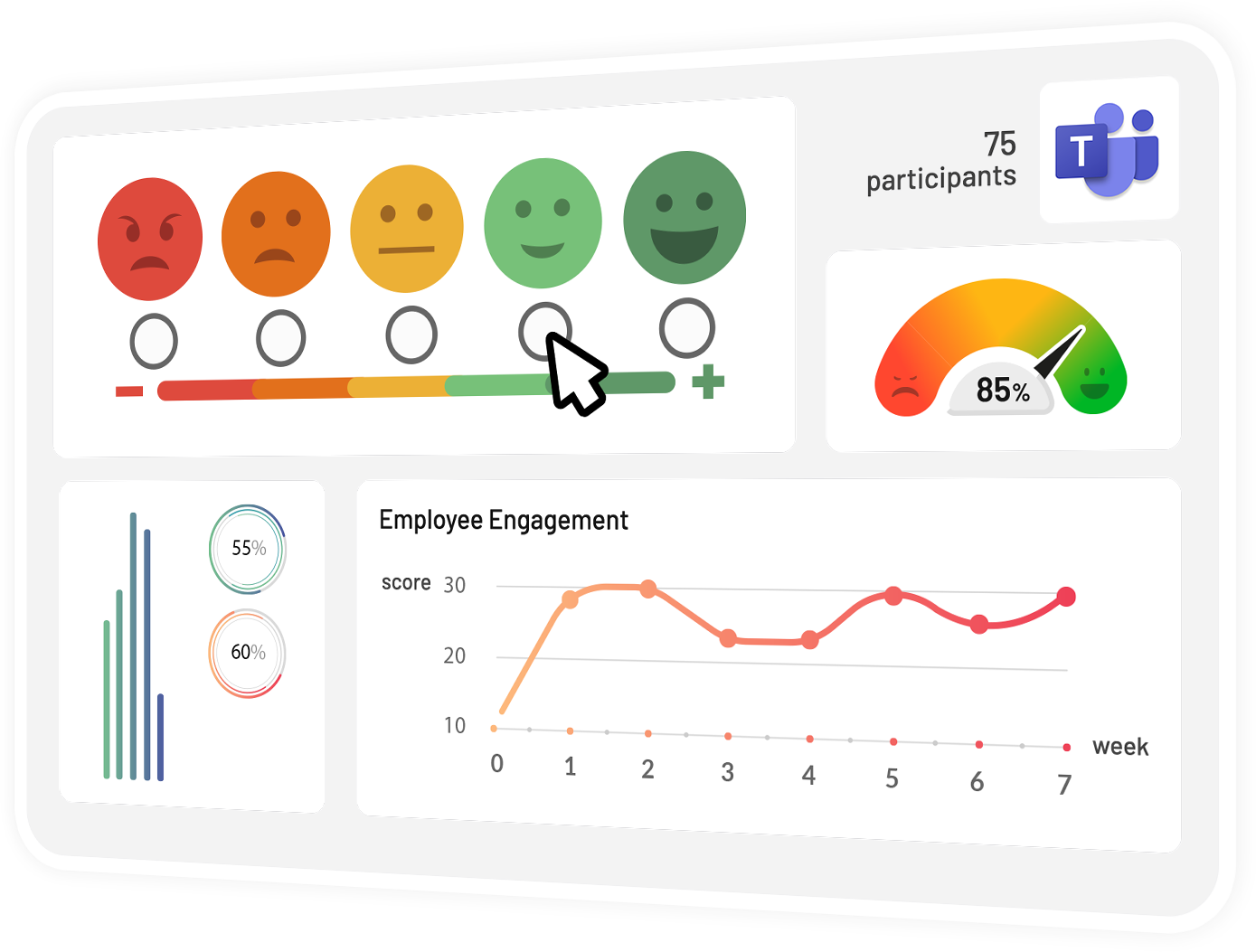Employee engagement surveys can help measure employee engagement and also assist the management to understand their stance on the current situation and extract valuable feedback.
So, if you’re wondering what are some good employee engagement survey best practices?
This article will provide you with an all-encompassing guide to the discussion surrounding employee engagement survey best practices.
Table of Contents
Employee Engagement Definition
So, what is employee engagement? The term essentially boils down to a concept that is entirely based on Human Resources (HR). In other words, the concept enables officials to determine precisely ‘how’ an employee feels about their job.
So, who is an engaged employee?
An engaged employee is an individual who is dedicated to their position and firmly believes that their work is linked with their company’s growth.
Moreover, these employees can directly affect their company’s success through their well-being and performance.
This whole process makes employee engagement an instrumental aspect of the development of the company.
Not to mention, communication plays a crucial role in maintaining stable employee engagement and helps boost the employees’ confidence while also enabling them to gain a sense of satisfaction from their job.
In short, employee engagement is directly proportional to an employee’s performance, productivity, and commitment to the company’s primary objectives.
Employee Engagement Survey Best Practices
The following employee engagement survey best practices can help you create meaningful results in your bottom-line through employee well-being and satisfaction.

1. Embracing Agile Practices
Employee engagement surveys used to occur annually which often resulted in delayed actions. The new approach to employee engagement surveys involves being agile. As one of the most important employee engagement survey best practices, this approach advocates for 90-day intervals.
With this approach, you can provide prompt insights, accumulate data, and identify trends with convenience.
2. Cultivating Leadership Buy-In for Maximum Impact
Your employees need to participate in employee engagement surveys so you can implement a successful process and drive results. This begins with leadership buy-in.
Communicate with your leaders about their survey intentions, goals, as well as the benefits of employee engagement surveys. You can encourage the leadership to champion the program so you can create alignment and highlight the importance of employee feedback.
3. Engaging Employees in the Survey Process
Ensuring transparent communication is one of the most crucial employee engagement survey best practices.
You need to be clear about your survey’s aim, highlight the confidentiality, and promote it via different channels.
A well-informed and engaged workforce contributes to the richness of survey data.
4. Live Discussions and Continued Communication
Live discussions, whether in person or through video, play a crucial role in reinforcing commitment and transparency. They provide an ideal platform to discuss survey results, share the organization’s goals, and outline achievable targets for the next 90 days.
By structuring employee engagement surveys into these key sections, organizations can not only gather valuable insights but also transform feedback into actionable strategies, creating a culture of transparency and continuous improvement.
The commitment to implementing positive changes based on survey results is central to achieving sustained improvements in employee engagement over time.
What is the Difference between Employee Engagement and Employee Satisfaction?
It is essential to be able to tell these two terms apart as they hold significantly different meanings.
For example, while employee satisfaction is solely constructed upon the happiness and contentment of an employee, employee engagement, on the other hand, is more concerned about the level of enthusiasm and emotional commitment an employee holds to their work.
Improving employee satisfaction doesn’t necessarily surge a sudden growth in an employee’s performance per se.
Sometimes, it leads high-performing employees to believe that the conditions being met for employee satisfaction exist for average performers to escape responsibility.
This often happens because the definition of satisfaction might vary for each employee in any sense. A good example would be employees who are satisfied after receiving paychecks after doing below-average work.
How to Increase Employee Engagement?

1. Communication is Key
When talking about employee engagement survey best practices, one risk that poses a liability to employers when a substantial expansion of an organization is when the staff is disconnected.
While a devoted team for internal communications can solve your weak communications issue, HR teams can also step up to manage communications between employees and help establish strategic alignment within the company.
Some active solutions to this problem could be encouraging physical and virtual communications. For example, fliers, newsletters, or posters can help employees communicate in person.
In contrast, social media sites like Workplace by Facebook or even emails can help resolve communication issues virtually.
2. Caring for Employee Well-being
Research held in the UK has stated that engagement is interlinked with the well-being of an employee and the overall strategic alignment of the company.
Solutions to these may comprise mental health assistance at the workplace, encouraging a healthy lifestyle and effective communication, an employee assistance program, etc.
3. Prioritizing Employee Feedback
Employees thrive upon receiving proper feedback from managers as it helps to impact their degree of engagement in an office space. Therefore, frequent check-ins with managers can be quite helpful to increase employee engagement.
Although, it is necessary to note that not all teams require the same frequency of ‘check-ins,’ and hence they should be scheduled according to the needs of a specific department.
4. Focusing on Engaging Management
Believe it or not, managers are incredibly accountable for the engagement of their teams. Hence, apart from checking in with employees individually, it may be beneficial to check in with the middle management now and then.
5. Employee Recognition and Rewards
It is no news that engaged employees will always go the extra mile to do the needful in an office space. Appreciating your employees’ efforts and caring about employees’ feelings will boost their morale and encourage them to do better in the future.
One of the best ways you can go about with this is through recognition. Keeping track of recognitions is one of the key employee engagement survey best practices.
6. Pulse Surveys
As the name “teases,” pulse surveys provide quick solutions that answer companys’ employee engagement-related pain points. Pulse surveys primarily consist of 10-15 questions which are reflecting the employees’ point of view.
The questions mainly focus on job satisfaction, communication and relationships towards employees, and the overall work environment.
Pulse surveys are essential staff engagement surveys because they give voice to every staff working in an organization, hence making their feedback feel validated by their employers and they are way easier.
What is the difference between pulse surveys and employee engagement surveys?
Pulse surveys mainly focus on the essential assets of the company, and they are the “shortcuts” to an engagement survey. It usually takes under 5-6 minutes to complete. Thus, measuring and keeping the finger on the “pulse of the company” becomes much easier for managers and HR teams.
Employee engagement questionnaires are always more detailed, and it takes much more time to analyze the general outcome. In addition, these surveys usually take place annually.
But let’s face it: Most employees experience their jobs on a weekly and monthly basis. So even though they might have a great experience during the whole year, the answers might change until the last minute.
Benefits of Pulse Surveys
Why is an employee engagement survey important? The benefits that entail properly conducted pulse surveys are uncountable.
From lifting the spirits of employees, and reducing employee turnover rate to giving them the right amount of freedom for them to be felt heard, it does it all.
Some of the benefits of pulse surveys include:
- Creating a space for collecting valuable feedback through emails without spending a single penny in the process.
- Provides scopes of a follow-up discussion from the issues collected from the survey.
- Analyzing how content your employees are with their workspace and using it as a benchmark for future surveys.
- Working on areas of development where the employees are less content with.
- It helps to detect mismanagement and poor leadership.
- Significantly improve communication.
- The quickest way to improve employee engagement.
- Providing proper feedback to show that their concerns have been heard and acted upon.
Purpose of Employee Engagement
One of the most prominent purposes behind employee engagement is to allow the employees to gain a better perspective on what the company aims to achieve.
In addition, providing them with a clear set of primary goals to work towards eliminates unnecessary confusion and provides a better scope of teamwork.
Another essential purpose for employee engagement is to enhance productivity. This is because lesser productivity in a work environment slows the company’s growth as a whole while giving rise to toxic work culture and monotony of work for the employees.
Looking after the well-being of employees is another purpose behind employee management since good mental and physical health means an automatic increase in mood and concentration for work.
The more we discuss the benefits of employee engagement, the more the importance of employee engagement surveys shines through.
How to conduct employee engagement surveys?
The best way to conduct an employee engagement survey is through employee engagement survey software. Whether you are working remotely or not doesn’t make a difference here.
Using excel spreadsheets or printed-out surveys is a pain in the neck for both your employees and the environment! There are some very helpful employee pulse survey tools out there but the best pulse survey tool for Microsoft Teams has to be Teamflect!

Sending out an employee engagement survey questionnaire to your employees should be a simple process.
You shouldn’t go out of your way to do it. Teamflect offers users just that. You can conduct and analyze entire employee engagement surveys without leaving the comfort of Microsoft Teams or firing up another software.
Teamflect has tons of sample employee engagement surveys available for you to choose from and every single one of them can be customized fully.



